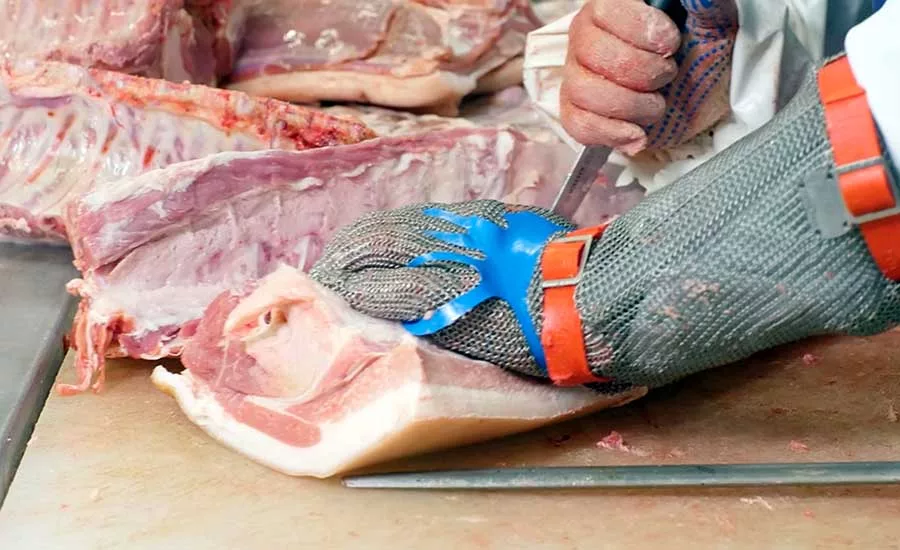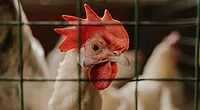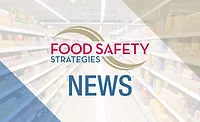Pork and Prejudice: How the Industry's Science-Driven Approach Outshines Salmonella Standards in the Pursuit of Improving Public Health
Regardless of the proposed Salmonella performance standards, the pork industry has consistently taken proactive measures to address and mitigate Salmonella contamination risks for years

Video credit: Andrew_Bu/Creatas Video+/Getty Images Plus via Getty Images
When one hears the phrase, "Salmonella outbreak," what is the first food that comes to mind? Poultry, eggs, cookie dough, peanut butter, sprouts, or perhaps something else entirely? Interestingly, "Salmonella outbreaks" have been associated with dozens of different food items, which has allowed Salmonella to maintain the infamous title of being the "most frequently reported bacterial cause of foodborne illness in the U.S. every year."1 According to the Centers for Disease Control and Prevention (CDC), Salmonella causes approximately 1.2 million illnesses and 450 deaths each year in the U.S.2
Although eggs, poultry, and peanut butter are highly publicized for their role in salmonellosis, many foods can harbor the organism, including pork. Current estimates suggest that pork is "responsible for approximately 10 percent of domestic cases of salmonellosis among all foods, with lower- and upper-bound estimates of 7.7 and 13.1 percent, respectively."3
As part of the Healthy People 2030 objective, the U.S. Department of Agriculture's Food Safety and Inspection Service (USDA-FSIS) is actively working toward a 25 percent reduction in salmonellosis.4 The implementation of performance standards in the poultry industry began in 2016, utilizing a category system, and in 2018, USDA started publishing Salmonella data for poultry producers. In 2022, USDA-FSIS followed suit by proposing Salmonella performance standards for raw comminuted and raw intact/non-intact pork cuts, aligning closely with the standards set for the poultry industry. Like poultry, pork processing facilities will be categorized based on the percentage of Salmonella positive samples during a 52-week moving window, and facility category standings will be made public.
- Category 1 (full compliance): < 12.5 percent positive rate in comminuted or < 6.25 percent in pork cuts
- Category 2 (danger zone): 12.5–25 percent in comminuted or 6.25–12.5 percent in pork cuts
- Category 3 (failing): > 25 percent in comminuted or > 12.5 percent in pork cuts.
Over the years, industry has observed both the carrot and stick approach applied through rulemaking by USDA-FSIS. Although one could argue both approaches can cause change, rules that are hastily applied to appease outside pressures often are not grounded in sufficient amounts of science and, thus, will not result in meaningful change, nor produce the intended public health outcomes. One could argue such is the case with Salmonella performance standards in meat products, as the authors contend that the baseline numbers are not based on a true prevalence study. Additionally, all "cuts" are considered the same, and it is well known that some "cuts" carry higher risks than others. Admittedly, the industry owns the lion's share of responsibility of addressing the issue of foodborne illnesses, even in raw products that are intended to be fully cooked at the consumer level for safety.
However, the approach of publicly revealing names of meat companies (stick approach) by putting them into a category standard that is undoubtedly supposed to imply some level of risk, has not really moved the needle in terms of public health. Leading up to the Salmonella performance standards for parts and comminuted in poultry, facilities started using chemicals at every step in their process to try to reduce or eliminate Salmonella, but that approach was not always grounded in the science of Salmonella mitigation. Although it may have helped more facilities meet the arbitrary category status, did it really make a difference for public health outcomes? The answer is a resounding "no," and FSIS admitted as much in the December 2022 Proposed Regulatory Framework to Reduce Salmonella Illnesses Attributable to Poultry.
"Despite FSIS sampling data showing reductions in Salmonella contamination in poultry products, our current approach to Salmonella has not led to a demonstrable reduction in Salmonella infections. For example, during the five-year period from 2017–2021, the number of chicken samples in which FSIS detected Salmonella decreased by more than 50 percent. However, the estimated rate of human Salmonella infections from all sources has remained consistent over the last two decades, with an estimated 1.35 million infections in the U.S. each year. The most recent report from the Interagency Food Safety Analytics Collaboration estimates that over 23 percent of foodborne Salmonella illnesses are attributable to poultry consumption—almost 17 percent from chicken and over 6 percent from turkey."6 The most likely causes of this gap are related to focusing on all Salmonella serovars instead of the most pathogenic ones, as well as attribution data that categorizes all types of chicken (or other commodities) into broad categories; thus, the real reductions attributed to product type cannot be evaluated.
The authors believe there is a gap within FSIS in the approach of broadly applying a presence/absence standard and implying some sort of inherent food safety risk absent other key factors (e.g., enumeration, intended use, virulence of different serotypes, etc.). For instance, there are more than 2,500 known Salmonella serovars, and each has a different survival rate and virulence factor. Based on virulence factors, the infection dose can vary widely from < 100 to 106.7 This is really not telling the whole story and, in a way, can be misleading to the general public. Overnight, companies that were once trusted became suspect, when in fact they were no less risky than they were the day before.
Looking for quick answers on food safety topics?
Try Ask FSM, our new smart AI search tool.
Ask FSM →
In reality, the amount and degree of interventions applied to the processes as a result of these one-size-fits-all standards could have the Darwinian effect of potentially selecting for hardier pathogenic strains of Salmonella over less pathogenic ones. All of this has not played out yet, but the fact remains that, more often than not, when the stick approach is applied, the outcomes are uncertain and, in some cases, could be detrimental. The lack of focus on truly pathogenic Salmonella can push the industry into controlling serovars that are not a public health risk. Resources from the regulatory agency, as well as from the industry, are directed to the wrong target, although a technology gap may be confounding this.
In direct comparison, the approach USDA-FSIS took with the Listeria rule showed a more balanced and scientific approach to applying a risk-based standard to classifying ready-to-eat (RTE) products into one of three alternative categories, based on the inherent properties of the products and/or process. It let the industry partner in a solution and leveraged real science to help self-categorize risk. It allowed companies to decide which risk category each of their products would fall into while not publicly shaming companies or calling one facility worse than another based on an arbitrary, broad-based standard. This allowed each company the freedom to be innovative and use science to determine which solution would best fit the products it produces, instead of a one-size-fits-all approach. This carrot approach was well-received by the industry and has been successful due to the science-based nature of the rule, which is also reflected in a decline in outbreaks and illnesses.
Nevertheless, the proposed standards have not caught anyone in the pork industry by surprise. In addition to the precedent set in poultry, FSIS has conducted surveillance sampling for Salmonella in the pork industry for years, beginning with pork carcass studies in the late 1990s and progressing to raw pork product sampling in 2015. It is worth noting that, "In 2012, FSIS stopped sampling and testing for Salmonella in pork carcasses because percent positive findings were very low and carcass sampling was not a good use of Agency resources."3 At present, FSIS conducts monthly sampling of raw comminuted and raw intact/non-intact cuts at pork processing facilities, with the number of samples collected determined by production volume.5 Regardless of the proposed Salmonella performance standards for pork, the pork industry has consistently taken proactive measures to address and mitigate Salmonella contamination risks for years, with a constant focus on food safety improvements that positively impact human health. A notable accomplishment is the reduction of nearly 13 percent of the industry average of positive results for comminuted products since 2019. Moreover, in the past year alone, there has been an additional 2 percent decrease in the average percentage of positive results for comminuted products within the industry. These statistical improvements are not mere coincidences; they are a result of the proactive and collaborative approach adopted by the majority of the pork industry.
Swine slaughter and pork processing facilities have not solely depended on FSIS for sampling data and regularly perform independent, investigative sampling. This testing encompasses regular sampling of raw materials, finished products, and processing equipment, in addition to ongoing carcass sampling. Routine investigative sampling serves as a valuable tool for monitoring Salmonella performance and identifying areas that require additional mitigation efforts. While sampling is beneficial for detection, it plays a minor role in the broader objective of prevention in order to reduce human illnesses caused by Salmonella. Many companies have generated internal data, as well as cooperated with universities to genuinely understand the types of Salmonella in the process, from the farm to the final product. Data have allowed the industry to understand risk points in the process, as well as the highest-risk products and how Salmonella changes throughout the process. Data and science will ultimately inform decisions that will impact public health.
Additionally, in collaboration with the North American Meat Institute (NAMI), pork industry leaders have actively joined forces in recent years to disseminate Salmonella prevention and control strategies based on the latest science. The collective goal is to promote universal food safety knowledge, improve human health, and contribute to USDA's ambitious target of achieving a 25 percent reduction in salmonellosis cases by 2030. Although a definitive, silver-bullet solution has yet to be uncovered, the pork industry fully acknowledges the necessity of adopting a comprehensive, multi-hurdle approach from farm to fork to effectively tackle this challenge.
While it is impossible to discuss the intricate details of every control strategy here, the basic fundamentals can be outlined, starting with pre-harvest controls and ending with pork product distribution:
- Pre-harvest controls: Pest control, biosecurity, herd health/diet/water, sanitation on the farm and transportation (truck) sanitation, lairage, etc. To a lesser extent, vaccinations, and bacteriophage options are available, but the impact remains unproven, and these tactics are not commonly implemented.
- Post-harvest controls: Sanitary dressing and reduction of cross-contamination, effective chilling, comprehensive sanitation, good manufacturing practices, team member training, process controls/physical interventions, and antimicrobials/sanitizers.
- Distribution: Cold chain.
Contrary to the chemical-heavy approach taken by the poultry industry, of the prevention and control strategies outlined above, empirical evidence has shown that the three most effective strategies to effectively minimize Salmonella in pork are comprehensive sanitation, effective chilling, and physical interventions/process controls. Indeed, the most successful facilities have focused on improving sanitary design, limiting or eliminating common touch points/cross-contamination, developing a thorough master sanitation schedule using baseline sampling data, and maintaining the cold chain from carcass chilling through distribution. The old adage of "keeping it clean, cold, and moving" certainly applies here; however, it is crucial to recognize that the optimal approach for minimizing Salmonella contamination in meat lies in the implementation of a comprehensive, science-based food safety program. Such a program should encompass various mitigation and control measures, including pre-harvest interventions, processing interventions, and robust testing and monitoring programs. By adopting a holistic and science-based approach toward food safety, the pork industry can continue to prioritize human health, while also complying secondarily with the forthcoming USDA proposed Salmonella standards for pork.
FSIS should consider adopting a collaborative, science-based "carrot approach" with the pork industry, as opposed to fitting poultry performance standards into the pork space. The proposed pork standards did not consider the most current science of pathogenicity and quantification when they were developed and, therefore, continue to harbor the same flawed assumptions that have proven to be ineffectual on improving human health so far with poultry. One such assumption is that the number of illnesses prevented by implementation will be directly proportional to the number of illnesses that occurred prior to implementation. This erroneous notion disregards crucial scientific facts regarding virulence and infectious dose, and it fails to acknowledge that not all positive cases will ultimately result in human illness. Persisting with this assumption when setting the pork standards is a clear manifestation of repeating the same actions and expecting different results.
Yet, despite the flawed assumptions, headaches, and admitted lack of results, there is still great reason for optimism! While FSIS rulemaking tactics may be ineffective in the authors' opinion, the objective of improving human health by reducing Salmonella infections aligns directly with the meat industry's goals. The pork industry, especially, remains committed to adopting a proactive and scientifically grounded approach to ensure the safety of its products. Furthermore, pork producers will continue to collaborate with one another through NAMI to exchange and implement the best prevention and control strategies. Regardless of when the final rule is published or what directions it entails, the pork industry will be well on its way to doing its part to improve public health by collecting data and making informed, science-based decisions.
References
- American Meat Association. "Salmonella Fact Sheet." 2015. https://meatscience.org/docs/default-source/publications-resources/fact-sheets/Salmonella-fact-sheet-2015.pdf?sfvrsn=87518eb3_0.
- Centers for Disease Control and Prevention. "Salmonella." September 2016. https://www.cdc.gov/Salmonella/pdf/CDC-Salmonella-Factsheet.pdf.
- U.S. Department of Agriculture Food Safety and Inspection Service (USDA-FSIS). "Changes to the Salmonella Verification Testing Program: Proposed Performance Standards for Salmonella in Raw Comminuted Pork and Intact or Non-Intact Pork Cuts and Related Agency Verification Procedures." Federal Register 87, no. 32 (February 16, 2022). https://www.fsis.usda.gov/sites/default/files/media_file/2022-02/FSIS-2019-0023.pdf.
- Elliott, Scott. "The Grand Challenge: Salmonella." USDA. June 7, 2023. https://www.usda.gov/media/blog/2023/06/07/grand-challenge-Salmonella.
- USDA-FSIS. "Raw Pork Products Sampling Program." January 3, 2023. https://www.fsis.usda.gov/policy/fsis-notice/01-23.
- USDA-FSIS. "Proposed Regulatory Framework to Reduce Salmonella Illnesses Attributable to Poultry." October 2022. https://www.fsis.usda.gov/inspection/inspection-programs/inspection-poultry-products/reducing-salmonella-poultry/proposed.
- Acheson, D. W. K. "Emerging Foodborne Enteric Pathogens." In Encyclopedia of Food Sciences and Nutrition, 2nd Ed. 2003. https://www.sciencedirect.com/science/article/abs/pii/B012227055X003990.
Wade Fluckey, Ph.D., is Senior Vice President of Technical Services for Clemens Food Group.
Mindy Brashears, Ph.D., is Associate Vice President for Research at Texas Tech University.
Thomas Boyd is Food Safety and Quality Assurance Technical Manager at Clemens Food Group








